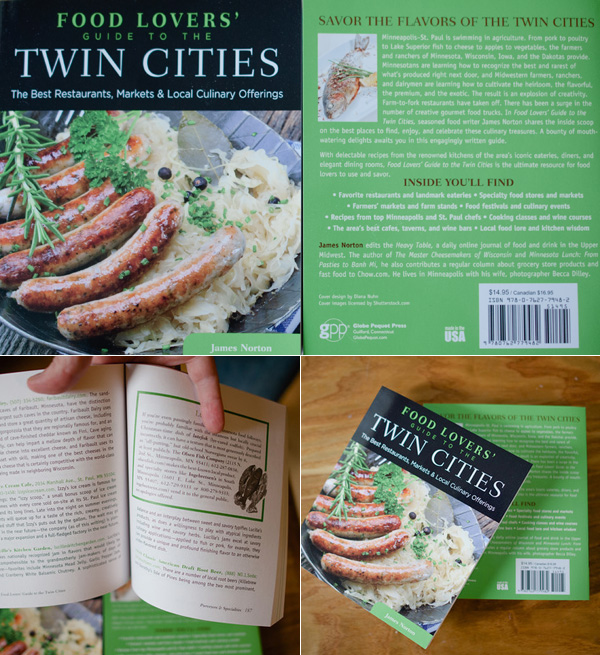
Unbeknownst to him, James Norton started the research for his newest book, Food Lovers’ Guide to the Twin Cities (Globe Pequot Press), long before its recent publication. Norton, the editor of The Heavy Table and who also has written for City Pages, Minnesota Monthly, and Chow.com, drew on his five years of eating all over the Minneapolis-St. Paul area to develop a snappy yet comprehensive overview of the most noteworthy restaurants, markets, and unique culinary offerings.
Recipes, road trips, and recommended food blogs — Norton (pictured, below) covers them all. Paging through the book, out-of-towners will be amazed at the variety of food-fueled experiences this area has to offer, while we locals can boast of the tasty bounty we get to enjoy any day of the week.
THE HEAVY TABLE: How do you start to write a book as comprehensive as this guide?
JAMES NORTON: First of all, the book is one take on the best restaurants and markets and culinary offerings; it isn’t trying to be 100 percent comprehensive. One thing you do is break it down by category. I thought about geography, for example; I thought about different ethnic-influenced styles of food; prices ranging from affordable, weeknight casual to once or twice a year, white tablecloth. I tried to make sure every category was well represented, so no matter where you were or what you were trying to do, there’s a good chance this book will steer you to a place that fills those needs.
HT: Talk about the challenges of writing a book about the Twin Cities food scene when the Twin Cities food scene doesn’t stay still for very long.
JN: I think that’s a fair point, but you can feel [the food scene] collectively moving in a direction, and the direction that I’ve been seeing for the last few years that’s distinct and quantifiable is people are really waking up to what is available locally in terms of ingredients and purveyors. Knowing your butcher, knowing your baker, knowing your farmer, knowing your rancher — making those kind of connections with people who are growing the food and raising the food right here in the Upper Midwest. I’ll see even a new hotel restaurant open up, and they’ll talk about their local purveyors and their links to the region, and I think that’s terrific. I think we’re going to see a lot more restaurants like that.

For me, I think there’s a parallel with Europe — why is Italy such a great food place, or why is France such a good place to eat? It’s because every village has its specialty and everybody knows the farmers and everyone’s working with the food of the land. For a long time, the Upper Midwest, and the Twin Cities, specifically, has wanted to be Paris, has wanted to be New York. We’ve been looking to other parts of the world for inspiration and to try to emulate them, and I think we’re finally coming around to the food made in this area, and becoming aware that we have fantastic cheese in Wisconsin and Minnesota as well.
We’ve got great local beer, great local meat, local fish from Lake Superior. We’re really starting to wake up to this treasure that we have, and I think as more and more places become aware of that and tap into that, it’s transforming the dining scene for the better. And that, if someone’s coming to the Twin Cities, is what people need to be looking for — where are places that do that well? — because that’s a meal you won’t have in San Francisco, that’s a meal you won’t have in New York. It’s something special to Minneapolis-St. Paul and the Upper Midwest.
HT: Let’s pretend it’s that New York Times feature “36 Hours in the Twin Cities.” Where would you tell people to hit if you had to write that?
JN: They should do something that is high-end pasture to plate; Corner Table or Heartland, for example, are really good places on that point. I think they should try something cosmopolitan — Pizzeria Lola or Bar La Grassa or 112 Eatery. I think that’s a nice thing to say, look, this is food that could be really great anyway, but it happens to be here. And I think dipping into Vietnamese food or Mexican food, going out on University Avenue, East Lake Street, getting into those communities, Eat Street, and trying something there is really going to blow some minds. Go to a good farmers market, or go to three good farmers markets.

If you go to the Minneapolis Farmers Market, the St. Paul Farmers Market and the Mill City Farmers Market, those are three very different experiences, but they’re all connected to the land and local food, and you’ll learn something different at each of them and have a really good time at each. Doing craft cocktails while you’re here is really fun, too, and you’ve got people like Johnny Michaels and Nick Kosevich, who ricochet from restaurant to restaurant, and it’s getting increasingly difficult to go to a new restaurant that doesn’t have a thoughtful craft cocktail presence. Again, a lot of those are using local bitters or local jam or some kind of local product.
HT: Is there a type of person who would be the ideal Twin Cities eater, or is it just anyone who likes to eat and has an open mind?
JN: I think you have to be willing to take Twin Cities dining on its own terms. I’m not meaning that as a backhanded dis. It’s not to say that you have to lower your standards when you come here, but you have to look for something different. I think what you’re looking for is a connection to this particular land — again, through cheese, through beer, through meat — and you have to be willing to get excited about that and learn a little about that. And then I think you’ll have a marvelous time, you’ll have a fantastic visit, and you’ll go back to wherever you’re visiting from and say, “Wow, I was blown away by what is going on in the Upper Midwest.”
I think if you’re trying to replicate what you ate in the East Village or the West Village or San Francisco and those are your standards, that’s exactly the kind of meal you’re hoping to have, it’s going to be challenging. There’s ways you can do it — you know, Chez Panisse. Do we have local equivalents? We do. But you kind of have to take the region for what it is, which is that it’s a different part of the country, its own gastronomic ecosystem, and if you come with respect for that, I think you’re going to have a fantastic time.
HT: Is there another metro area you would compare the Twin Cities to that’s closest in the kinds of food you’ll find or the variety or the sensibility around food?
JN: I’d say Seattle is a good equivalent. The people dining in Seattle and those making food in Seattle and the people dining in the Twin Cities and making food in the Twin Cities are worldly — they’ve been to Europe, been to Asia, been to New York, they’ve been to San Francisco. They are aware of what else is out there, and yet they’re working with their own, sort of unique palate in a slightly smaller city, and you’ve got to cater, at least somewhat, to the home team. So I think the challenges and advantages are somewhat similar. Obviously, we’ve got less salmon, more cheese, but I think the Pacific Northwest immediately resonates as a parallel, as opposed to, say, Chicago. Chicago does world-competitive fine dining, which we don’t do much of. I mean, Chicago’s got places like Alinea that stand up to Las Vegas and New York in terms of you spend $200-300 a plate and they give you 15 courses. That’s not really what we’re about here, La Belle Vie aside.

HT: Is there something that you can’t find here, that we just don’t know how to do here?
JN: Chinese food is a real challenge, and part of that I think is a volume thing. The places in New York that I liked that did the best Chinese food were huge and just sprawling. Everything was hot, everything was fresh. Chinese food and deli — Jewish deli — those are things where I’m willing to kind of concede. Historically, I’ve been down on our sushi and seafood, which makes sense — we’re not on an ocean — but you can go to Meritage or you can go to Masu (above), and I would hold up what they’re doing in those realms with anybody. Sea Change, too, and for more casual stuff, Sea Salt. Some people say, “Oh, you can’t get a good pizza in the Twin Cities.” Screw you — of course you can. Go to Black Sheep, go to Pizzeria Lola. If you don’t like those pizzas, there’s something wrong with you. It’s not the pizza’s fault.
HT: Putting restaurants aside, the book goes into markets and specialty food stores. What do you think we have that is noteworthy?
JN: I really like Golden Fig in St. Paul. I think they’re really in tune with what’s going on locally and really cater to that, and Local D’Lish as well. They’ve got a lot of soul, they’ve got a lot of heart, these little independent places. I’m at Kitchen Window and Cooks of Crocus Hill all the time, too — in fact, me and Becca [Dilley] will be teaching a beer and cheese class on Oct. 18 at Cooks of Crocus Hill with Michael Agnew. As far as a full-press specialty food shop, I think Surdyk’s is a real experience that’s worth having. I think they do what they do with a lot of pride. I think their cheese shop is great. And France 44 as well. I think those are fun places to kick around. The thing about Surdyk’s and France 44 is they’re very worldly, they’re very cosmopolitan, and I think that’s sometimes at the expense of the local. And that’s fine — they’re serving a need, they’re serving the things people are interested in, so I think they’re worth visiting, but I also really love little local places like Local D’Lish and Golden Fig. I appreciate that they’re trying to show off the best of what’s made here.
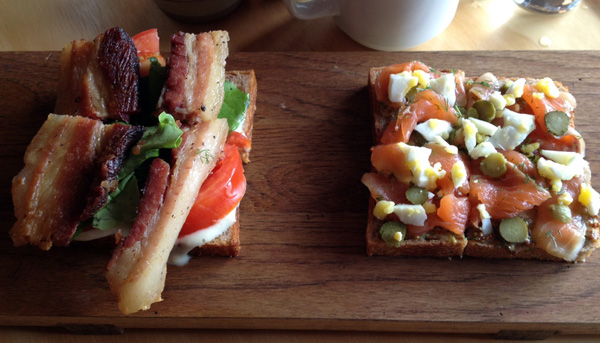
Ingebretsen’s is great, particularly if you have a little time to actually make yourself a deli meal — buy some of their smoked fish or some of their meat and their cheese and rye bread and make a little smørrebrød. Ingebretsen’s is definitely a really charming slice of how things used to be, and I think with the opening of Fika and the success of Bachelor Farmer (smørrebrød pictured, above), the way things are going. I think new Scandinavian, or new Nordic, is a very viable trend that we’re going to see expanding for the next five to 10 years and becoming a real part of the scene. We’ve got a legitimate claim to it. People are realizing that it’s just not Grandma food, it can be exciting food, so I think that’s an awesome thing that’s going on around here.
HT: Would you describe the Twin Cities food scene as chef-driven at all? Is it the chefs who really set the tone, or is it more the ingredients or the public’s appetite for them?
JN: Everything on some level is chef-driven because the chefs are the people, in most cases, who have the authority and the challenge of figuring out how to use the ingredients, unless you’re in more of a cafeteria or fast food setting. I don’t know that the Twin Cities are that chef-driven as other cities insomuch as the cult of the chef, where this chef moved to that restaurant, is as big here. I think there’s a little less emphasis on that and a little more emphasis on the food.
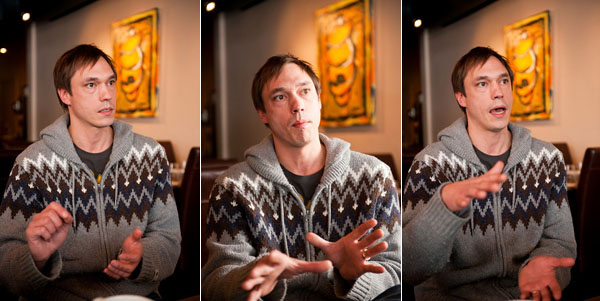
There are good things and bad things about that. I think that having chef-celebrities can really let people break open new ideas and expose people to new challenges, but I think it can also build up egos or almost turn it into a Hollywood scenester kind of thing. The fact that we have less of that here than in other places is not a bad thing. And it also depends on what segment of the market you’re looking at. If you’re talking about some casual Vietnamese place on Eat Street, you’re not going to know who the chef is and that’s fine. You get up to the fine dining level, and you do know about people like Don Saunders (above), and Stewart Woodman, and Russell Klein. Their names ring out, you know where they’ve been before, and that’s natural.
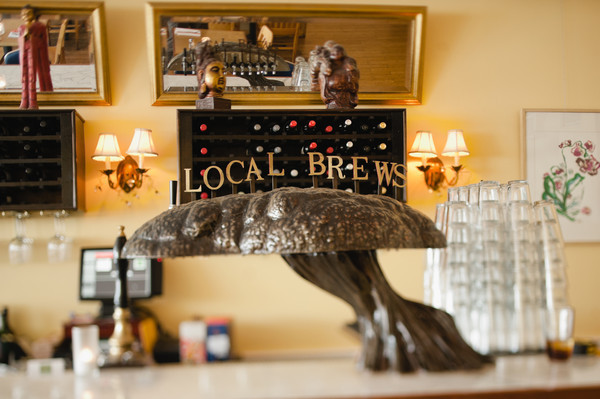
HT: If you did another edition of the book in another 10 years, what would you expect to see?
JN: I think you’d see a lot more places like Ngon Bistro (above), which is to say second- and third-generation Vietnamese and Somali food, like what Jamal Hashi is doing with Safari. Because right now these ethnic communities are still relatively young, and a lot of the places are first-generation places for first-generation eaters and challenging for the Western palate and outlook, though adventurous eaters love it. I think you’re going to see a lot more blending, and in the best sense of the word, fusion. I think fusion can be really chintzy and ridiculous when you try to force French and Japanese food together, but a place like Ngon is a really organic, natural fusion, where it’s kind of the best of the Upper Midwest meets this particular ethnic food tradition. I think food trucks are going to persist. At some point we’re going to stop adding 50 to 100 food trucks every year, but I think it’s still going to be around and be an important part of the scene.
I’m very stoked about the Upper Midwestern food scene and the Twin Cities food scene, and I think it’s going to great places. This book is, hopefully for me, the first of a series of volumes that explore what’s going on with food around here.
Food Lovers’ Guide to the Twin Cities is available at Bibelot, Golden Fig, and Kitchen Window (as of Sep. 28) and on Amazon.
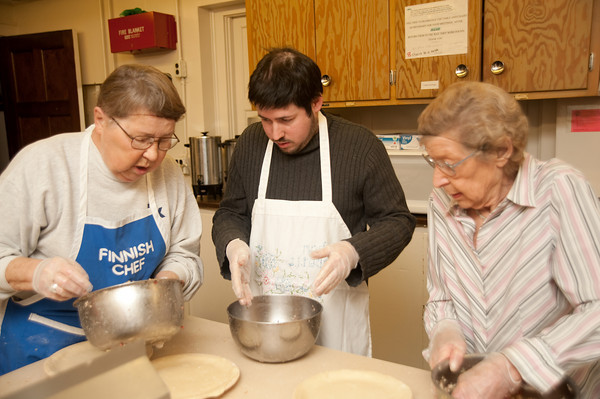

I would hardly consider Heartland to be one of Minnesota’s best restaurants. The food to dollar ratio is staggeringly uneven. I’m think they should change the title of this book to “The Hipsters Guide To Minnesota Dining”, or “We Spent The Last Month Watching Unique Eats, Look At How Cool Our Dining Scene Is!”
I’m in love with the photo of Jim and the Finnish chef!
Congratulations! Looks like a fantastic book. I’m so happy for you!
Pizzeria Lola is “cosmopolitan”?
The wizard steps outside the curtain…. Congrats, Jim, I look forward to perusing~ Brett
Congratulations on the new book! I like your vision of the future.
congrats on James for the book, looks delicious. and congrats to Jill for booking what must have been a really tough interview.